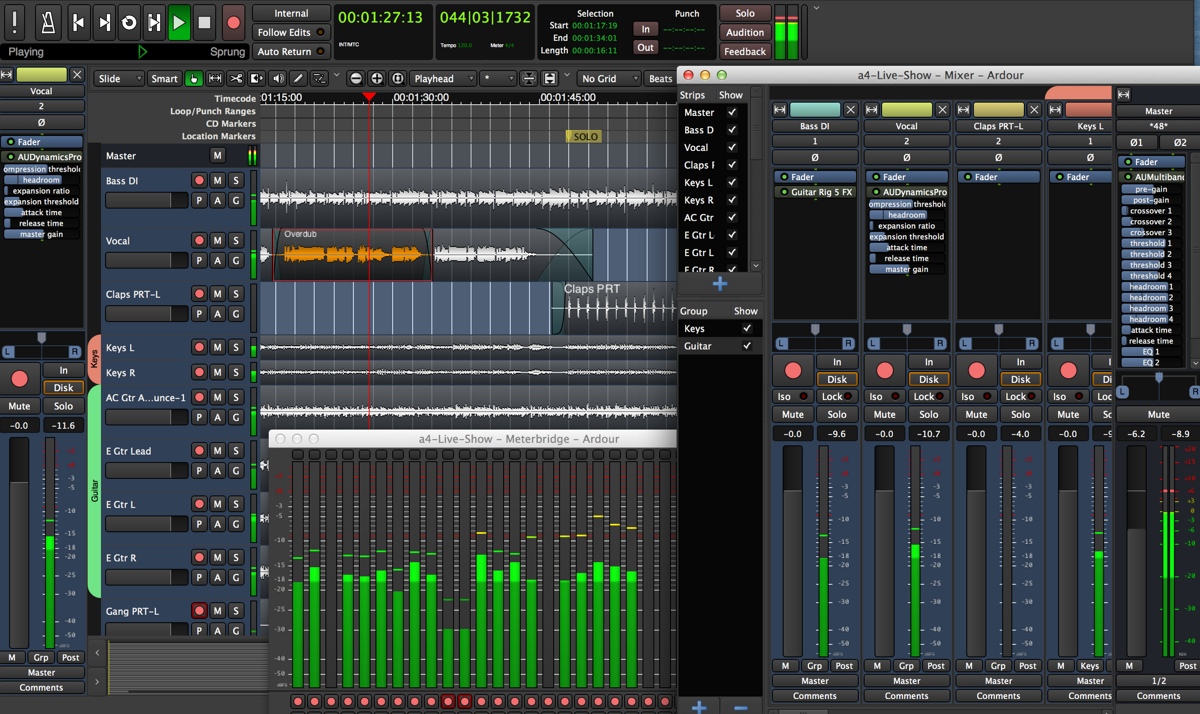
Was introduced recently the release of the new version of the popular Ardor 6.0 audio editor. This new version introduces several significant architectural changes to improve the reliability and quality of the application.
For those who are unfamiliar with Ardor, you should know that this application It is designed for multi-channel recording, sound processing and mixing. There is a multitrack timeline, an unlimited level of reversal of changes throughout the work with the file (even after closing the program), support for a variety of hardware interfaces.
The program is positioned as a free analog of ProTools, Nuendo, Pyramix and Sequoia professional tools. The Ardor code is distributed under the GPLv2 license.
What's new in Ardor 6.0?
In this new version of the application, a high quality resampling enginewhat se can be used when working with flows with a variable sample rate. The new engine made it possible to simplify the core Ardor code, provided correct processing of sound output for MIDI tracks and laid the groundwork for the subsequent independence of the sampling rate in Ardor.
Another change that is presented is the ability to monitor any combination of sound sources. Previously, it was possible to monitor the signal downloaded from the disc or supplied to the audio inputs. Now you are signals can be monitored simultaneously (simultaneously listen to the disc data and listen to the input signal).
The Grid function, which is overloaded with modes, is divided into two separate functions: Grid and Snap. Snap has features related to marker binding, which made the behavior of the grid more predictable and eliminated the need to constantly switch between different grid modes.
The method of MIDI data processing during playback has completely changed, which eliminated many issues that impede editing, such as sticky notes, strange behavior during looping, and disappearing notes. In addition, the speed display is simplified. For MIDI notes, velocity display is provided in the form of stripes.
A new plug-in link management system has been introduced which provides tools to establish arbitrary connections between plug-ins, as well as allows you to implement features such as managing multiple instances of the same plug-in, splitting the audio signal to feed multiple plug-in inputs, and providing plug-ins with access to inputs Auxiliary AudioUnit.
Also se supports binding arbitrary tags to plugins to simplify their categorization (For about 2000 plugins, labels such as Vocal and EQ have already been set.)
Of the other changes that stand out from this new version:
- Added a DSP Plugin Statistics screen that supports the display of aggregated data and information related to each plugin.
- In the backend for the ALSA audio subsystem, it is possible to assign different devices for input and output, as well as to display secondary devices.
- A new back-end has been added for PulseAudio, which is still limited to playback, but can be useful for mixing and organizing in Linux when working with Blutooth devices.
- Added support for importing and exporting MP3 files on all platforms. Added the ability to use FLAC as the native format for recording. A dialog has been added to set quality parameters for Ogg / Vorbis.
- Added support for Launch Control XL, FaderPort 16, XNUMXnd Gen Faderport, Nektar Panorama, Contour Designs ShuttlePRO and ShuttleXpress, Behringer X-Touch and X-Touch Compact.
- Added an experimental driver that works through a web browser.
- Official Linux builds have been formed for 32-bit and 64-bit ARM processors (for example, for Raspberry Pi).
- Added support for NetBSD, FreeBSD, and OpenSolaris.
- A new virtual MIDI keyboard is proposed.
- Raw recording mode was added, allowing you to record from any position of the broadcast on the channel.
Finally, if you want to know more about it, you can check the changelog or get this new version from its official website.